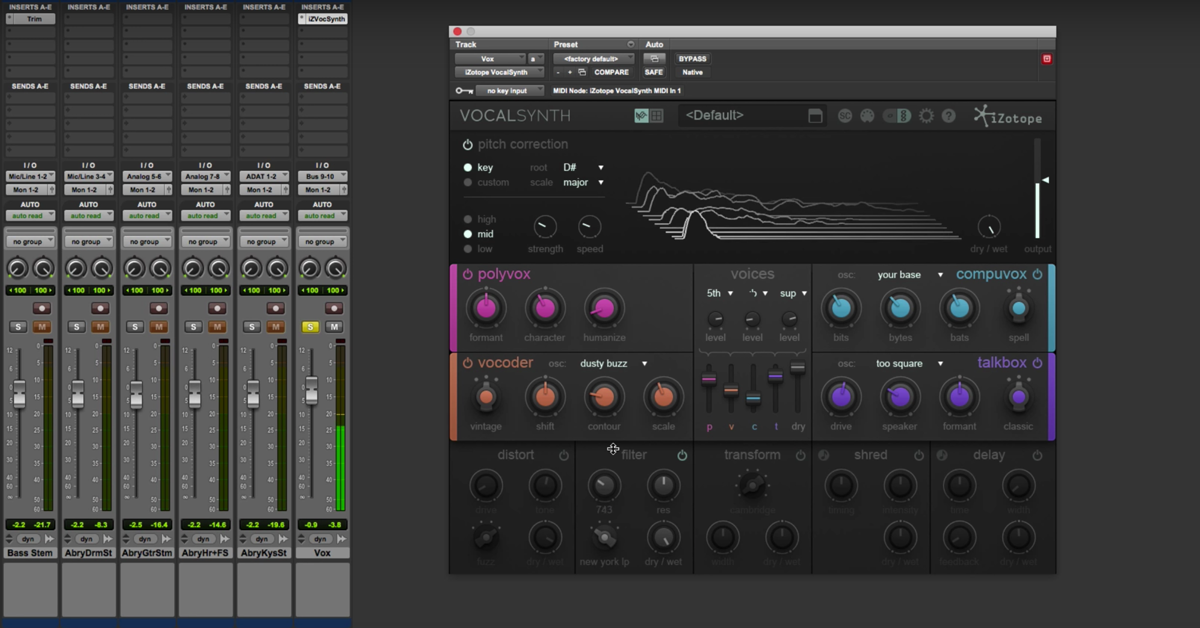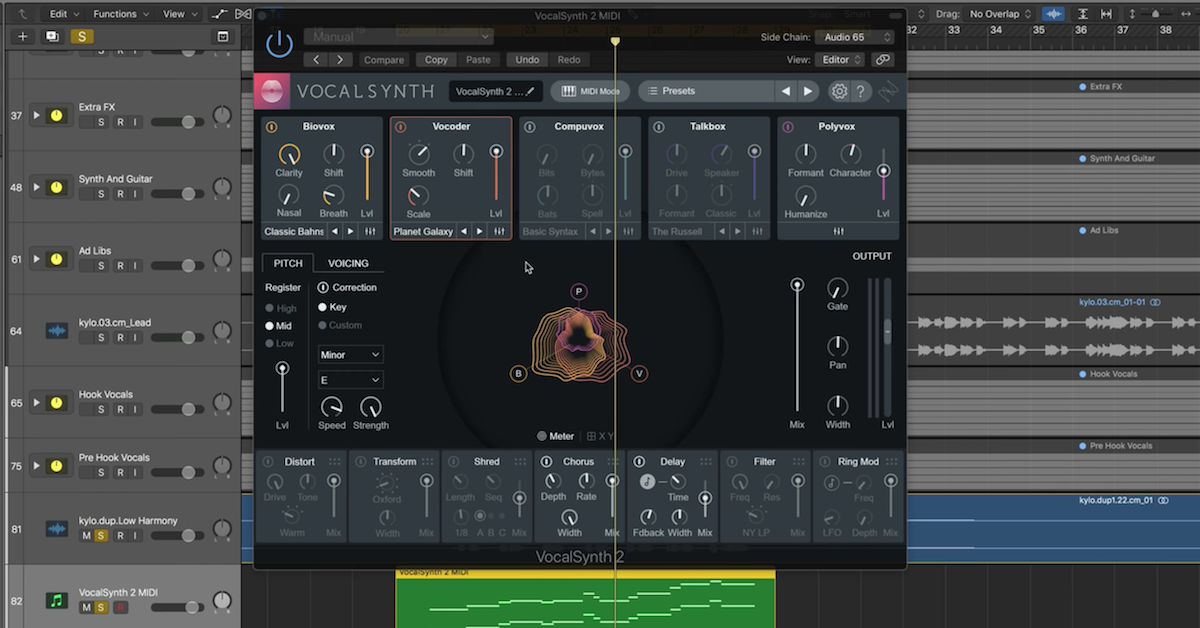The What, Why and How of Modular Synthesis
Article Content
The world of Modular Synthesis is exploding with possibilities and continues to expand with new developers entering the market with innovative and unusual products on a regular basis. There has been much written about it in the last few years and major industry magazines like Sound on Sound now have monthly sections dedicated to Modular gear. So what exactly is it? Why is it so popular? And how do you get started?
Brief History — What is Modular Synthesis?
Modular Synthesis began as a bicoastal phenomenon with Don Buchla on the West coast and Robert Moog on the East coast in the 1960s. Both were developing products for musicians looking to explore new electronic sounds. Each had different approaches and there was not a lot of communication between them at the time. Buchla’s clientele were more on the experimental side of the spectrum and interested in machine music and generative type approaches. While Moog was interested in making playable devices for performers in the mainstream. Tony Rolando from Make Noise gives an excellent presentation on the beginnings of modular here.
Buchla made the choice to explore new types of user interfaces for his instruments:
“The electronic and functional sophistication of the individual modules, coupled with the ability to connect or “patch” them together in whatever way the user fancied, gave musicians and composers enormous power to create unique, never-before-heard sounds.
In that spirit, it’s worth noting that Buchla tends to not refer to his instruments as synthesizers, since the name connotes imitating existing sounds and/or instruments. Rather, his intent is to make instruments for creating new sounds. Unrestrained artistic expression is the order of the day.
Buchla’s design goal manifests itself in many ways, including the omission of a standard piano-style keyboard and the addition of a unique “multi-dimensional kinesthetic input port” controller.” (source)
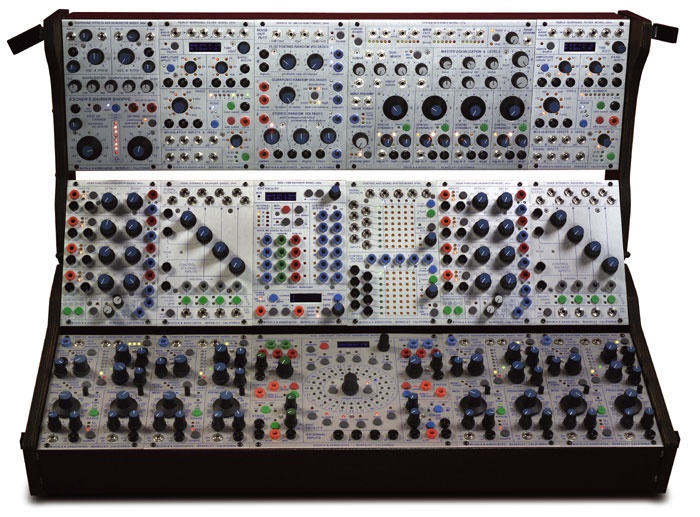
Moog, on the other hand, attached traditional keyboards, which made his instruments more accessible to musicians with an existing skill set. This may be one reason, if not the main reason, for the prevalence and financial success of Moog instruments in comparison to Buchla.
For a list of Moog synthesizer players, click here.
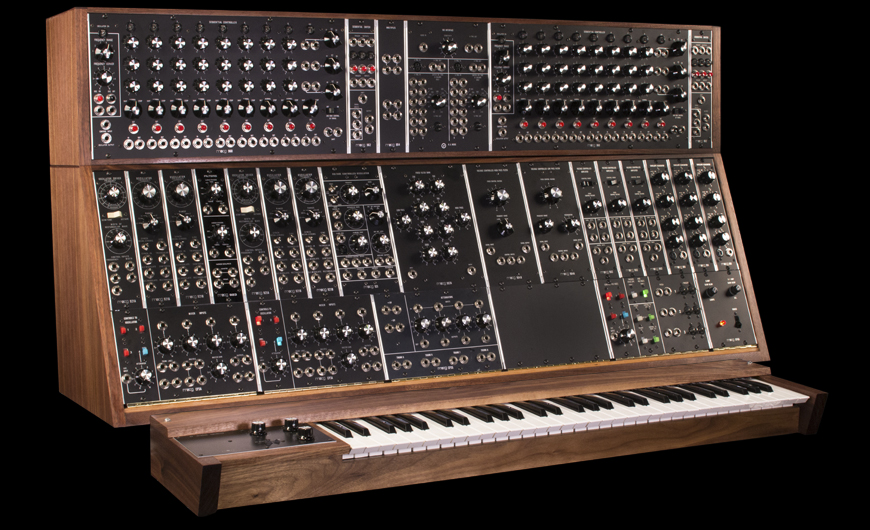
The main premise behind modular synthesis is that by connecting various modules together the user can construct unique signal paths capable of synthesizing sounds. In self-contained, non-modular gear, there are hardwired connections under the hood and the functionality is relatively fixed regarding the number of oscillators, LFOs, envelopes, etc., that are built into the device. With modular, there is the ability to expand the system in infinite ways, simply by adding more modules. Devices control or are controlled by other devices by means of CV (control voltage), the lifeblood of modular. Patch cables are used to send voltage throughout the system.
The problem with modular in the early years was the exorbitant cost, which made the devices inaccessible to the average musician. The advent of digital synthesizers in the late 70s and early 80s drove what seemed like the final nails in the coffin of the modular synth.
The introduction of the Doepfer A-100 analog modular synthesizer and the Eurorack format by Dieter Doepfer in 1995 changed all that. The standard was adopted by other manufacturers and since then the sector has exploded with hundreds of companies producing exceptional and innovative products.
Every Eurorack device is compatible in terms of rack dimensions (3U), power requirements and CV expectations, so you can freely connect modules with standard 3.5mm single conductor patch cables. Although there are other systems worth exploring such as Buchla, Frac and Serge, Eurorack has remained dominant, at least for the time being, with many more module choices available.
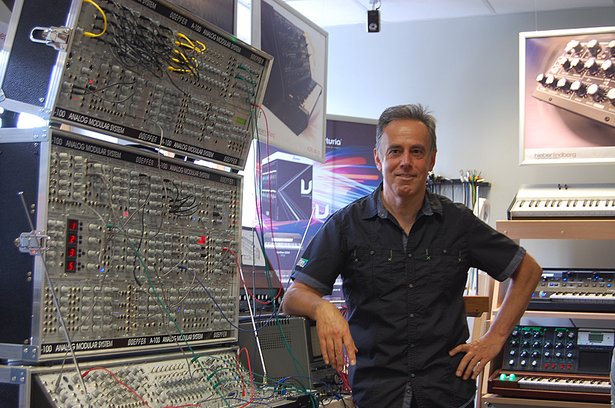
(Source)
Why Modular?
With increased competition comes a lower price, and it’s now possible to assemble a system for a fraction of the cost that was prevalent 50 years ago. Still, the price is higher than buying a self-contained synth or having an array of soft synths. You can expect to spend anywhere from $500 for a small semi-modular device to $1500 for a minimally-equipped modular system and up to the sky from there.
So why bother? This is where subjectivity enters. Many will argue that modular simply sounds better, richer, warmer (or whatever adjective you prefer), and that analog has qualities that cannot be replicated in the digital world. Others shy away from the idea of the patch cable rat’s nest, the extra cost, and lack of presets.
Everyone has a unique background and their own experience, so I would not presume to make recommendations for any musician. I do suggest visiting your local modular shop to hear some sounds, move some knobs and check out the myriad of interfaces currently on the market. If you’re in the Los Angeles area, Perfect Circuit has an excellent showroom for just such an experience. You won’t find a substantial collection of modular gear at your local Guitar Center, so if you don’t have a synth shop or pro music store nearby, you’ll have to find other means.
Although experiencing tremendous relative growth, modular is still a niche market and will probably remain so. But there is a huge online presence of enthusiasts and active users such as muffwiggler.com, perhaps the most popular forum out there. The second-hand market is flourishing as well, with used modules fetching up to 75% of their original value. If you can solder, you might also explore some of the many DIY module kits, which will save you a bundle.
The choice to go modular should not be taken lightly. Those that take the plunge may quickly discover that it’s an infectious and addictive path that demands ongoing investment. My personal gateway drug was the Moog Mother 32 semi-modular synth. A semi-modular device is a self-contained unit that requires no other modules to function. It has hardwired connections and a patch bay of 3.5mm jacks that allow alternative signal paths either within itself and/or with other devices as well.
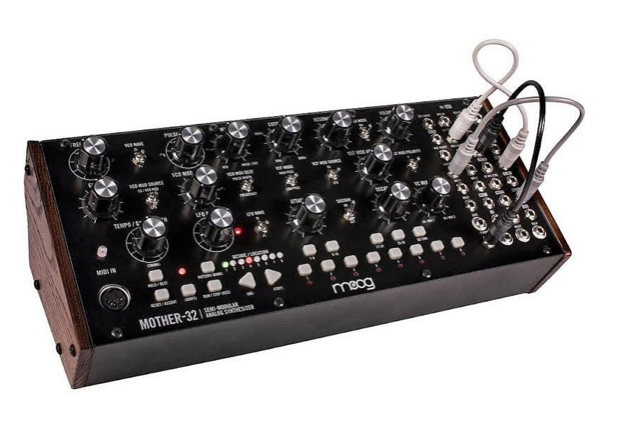
I was so enchanted by the sound of the Mother 32 that my system soon exploded to include the two racks below in a matter of months.
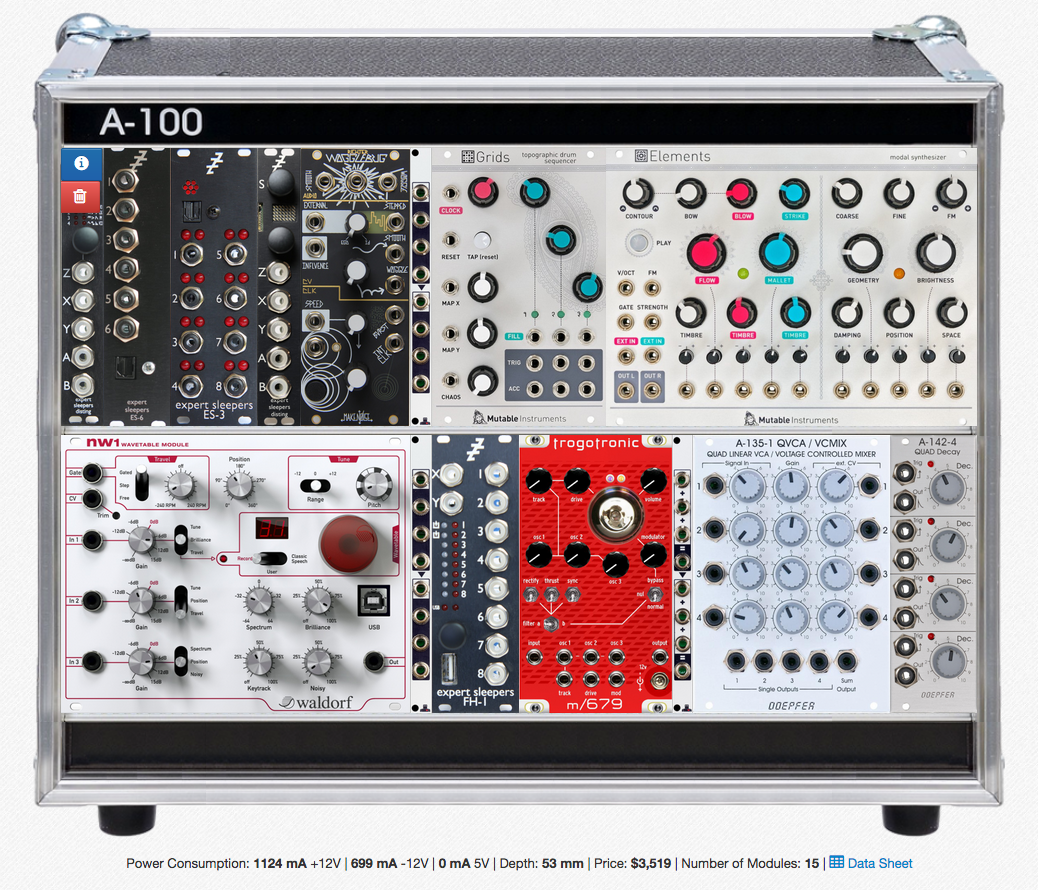
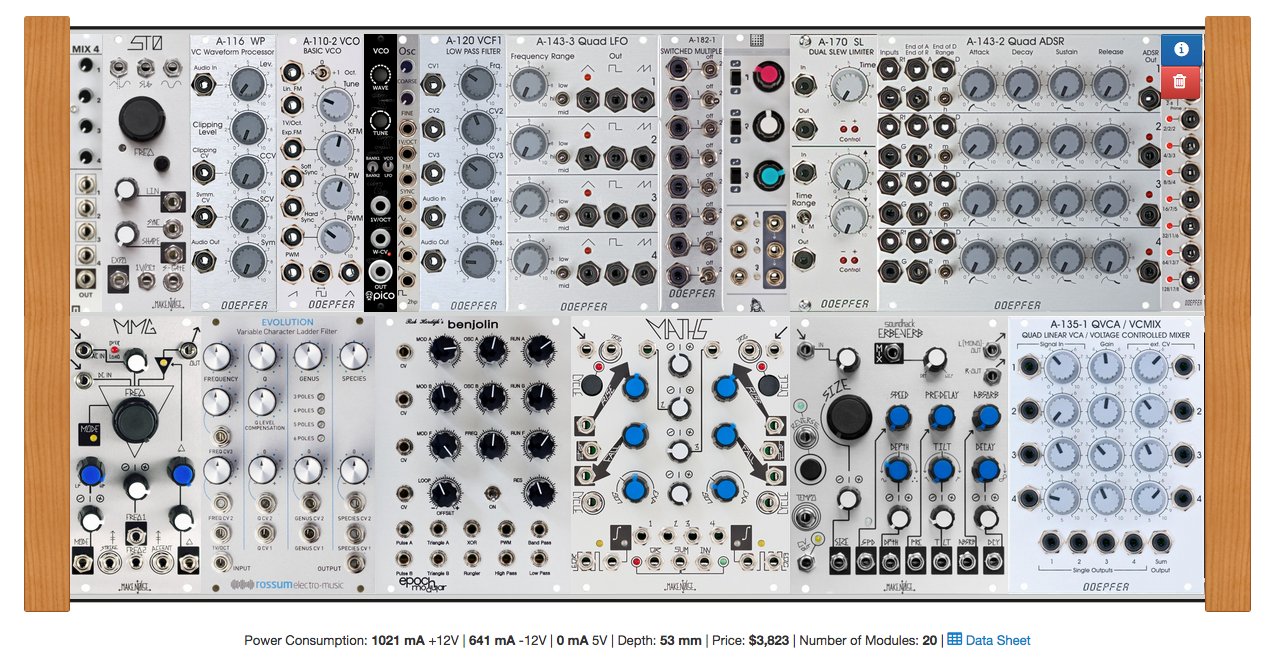
The images above, by the way, are generated by the website: ModularGrid.com. This site allows you to virtually construct systems based on the size of your case and the power/current requirements of your devices. My system is modest at best, when compared to some that have literally walls of modules. “They tried to make me go to rehab but I said, ‘No, no, no…'” (Amy Winehouse)
How to get started?
Unless you start with a semi-modular synth like the Mother 32 mentioned above, you’ll need some basics to get up and running.
Here are the main components of a system:
- Case and Power Supply — Euroracks are typically in rows of 3U or 3 rack spaces each and measured horizontally in terms of HP (horizontal pitch). Typical widths are 84 and 104 HP. Check out modulargrid.com mentioned above. Obviously, more room in a rack will lead to more investment, because no one likes an empty space in their rack. Some racks come with built-in power and some will need a power supply purchased separately. The investment in a rack is typically one of the largest cash outlays and should not be taken lightly. Try to project your future needs and portability requirements before making a choice.
- Oscillators or Full Synth Voices
- VCFs — Voltage Controlled Filters
- Envelope Generators
- LFOs — Low Frequency Oscillators
- VCAs — Voltage Controlled Amplifiers
- Utility and other modules which may include:
- Multiples for duplicating a signal
- Mixers
- Waveform Processor
- Slew Limiter
- Effect Processor (Delay/Reverb, etc.)
- Clock divider
- Attenuverters
- Random Voltage Generators
- Interface modules for getting MIDI and/or Audio in/out
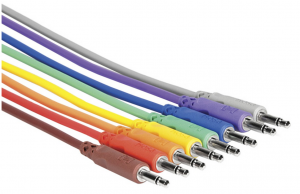 And don’t forget cables; lots and lots of cables. Having been a Max/MSP programmer for the last 25 years or so, I found the transition to real cables to be quite natural and intuitive. But weaving a labyrinth of patches in a way that still allows access to control knobs does take a bit of craft.
And don’t forget cables; lots and lots of cables. Having been a Max/MSP programmer for the last 25 years or so, I found the transition to real cables to be quite natural and intuitive. But weaving a labyrinth of patches in a way that still allows access to control knobs does take a bit of craft.
Interfacing with the Digital World
 Speaking of Max/MSP, it should be noted that interfacing a modular system with a computer DAW or other application, can yield extremely fruitful results. My performance rig features a custom patch I wrote in Max (seen below) to send sequences and other control information out to my modular rig. The digital information is converted to audio with an RME Fireface 802 and to CV using an Expert Sleepers ES-3 module (old mk2 model shown on the left has been replaced by the mk3) and an old MOTU 2408, which I picked up for $5 at a garage sale! The MOTUs have DC-coupled audio outputs, a necessary feature for healthy communication with module gear. Audio generated from my modular goes back into the RME and into an Ableton set I use for performance as well as recording.
Speaking of Max/MSP, it should be noted that interfacing a modular system with a computer DAW or other application, can yield extremely fruitful results. My performance rig features a custom patch I wrote in Max (seen below) to send sequences and other control information out to my modular rig. The digital information is converted to audio with an RME Fireface 802 and to CV using an Expert Sleepers ES-3 module (old mk2 model shown on the left has been replaced by the mk3) and an old MOTU 2408, which I picked up for $5 at a garage sale! The MOTUs have DC-coupled audio outputs, a necessary feature for healthy communication with module gear. Audio generated from my modular goes back into the RME and into an Ableton set I use for performance as well as recording.
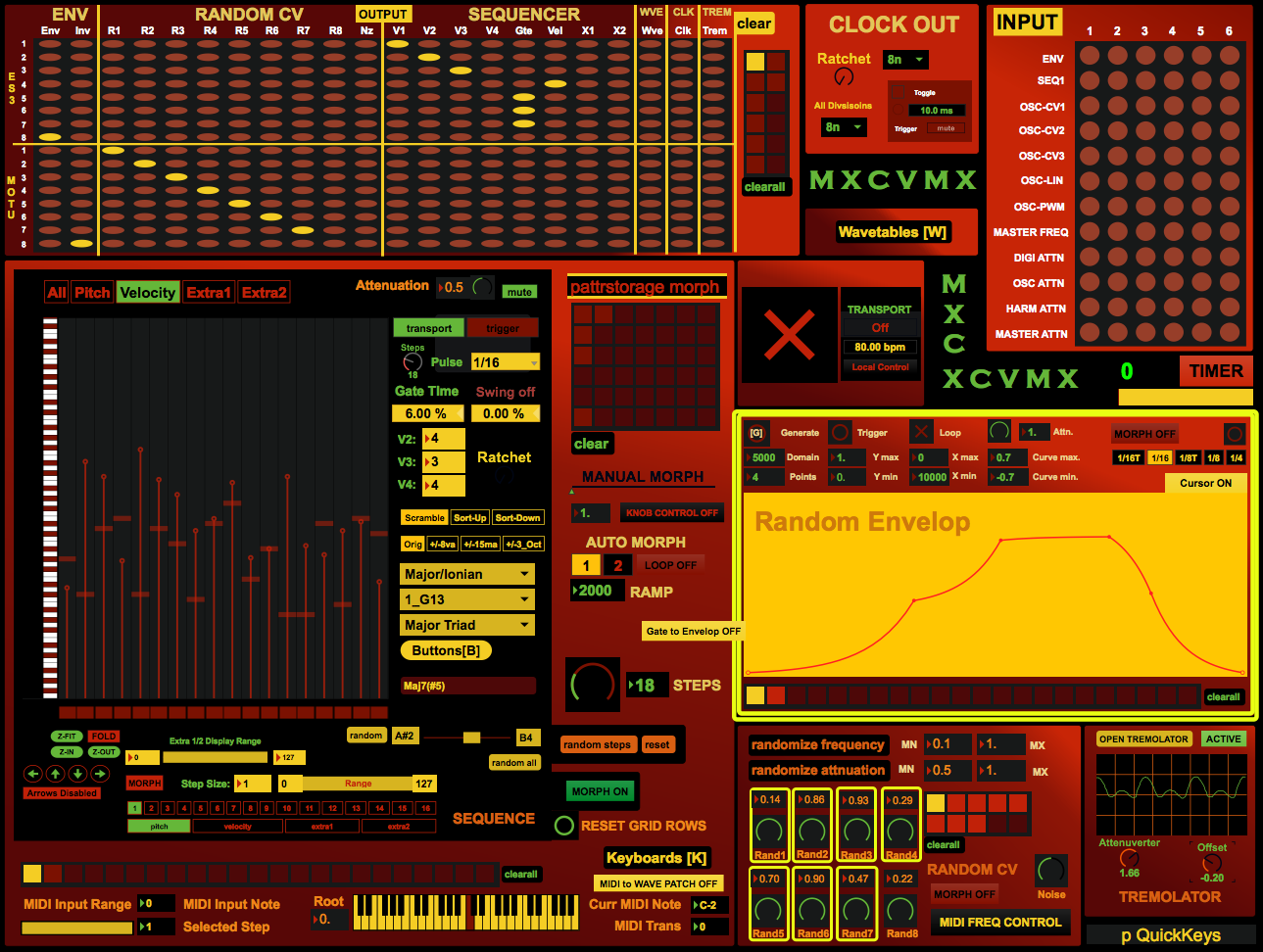
Conclusion
Proceed with caution. If you have a firm grasp of synthesis fundamentals, significant experience with either physical or software instruments, at least two months of rent in the bank or an empty credit card, and a desire that cannot be quashed by the most insistent significant other, go for it! But be forewarned, modular synthesis is not for the faint-hearted or the inexperienced synthesist.
I strongly recommend cutting your teeth with virtual synths first and learning the basics of sound, signal path, modulation, and synthesis in general.
Check out my other articles, reviews and interviews
Follow me on Twitter / Instagram / YouTube



